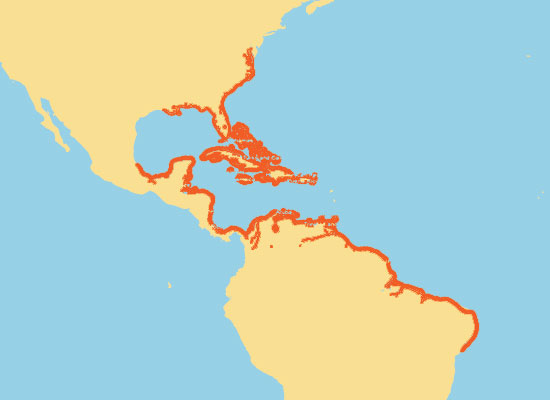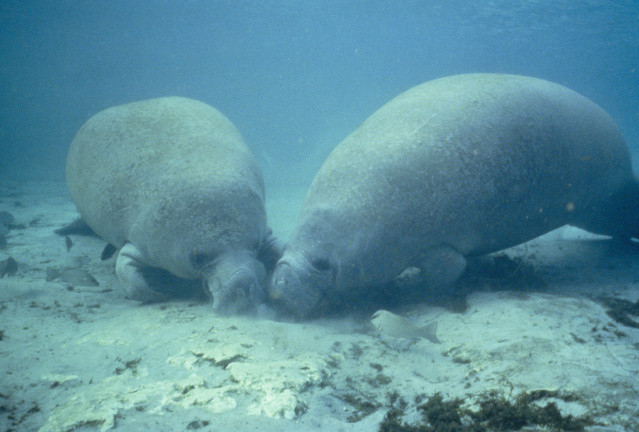Habitat
The Trichechus manatus has a large area it can call home. As
seen in orange on the map below, the T.manatus is
typically found in waters on the coast of the Gulf of Mexico and
the Caribbean sea and down to central eastern Brazil. In rare
cases it has also been spotted as far north as Rhode Island and
as far south as Uruguay. T. manatus is most common in tropical
regions due to their low metabolic rate and lack of thick layer
of insulating fat
(Olivera-Gomez,
2000). These attributes make it difficult for
the manatee to keep itself warm in colder waters, which is why
manatees are exclusively located in waters over 20° Celsius
(Garcia-Rodriguez, 1998). Some
manatees living in the northern areas are forced to migrate
south to warmer waters in the winter months
(Garcia-Rodriguez et al., 1998). In marine environments the
T. manatus is most common on the coastal areas because it prefers
waters not deeper than six meters (Olivera-Gomez,
2000) The shallow nature of the T.manatus habitat has had an
adverse effect on their populations. More than 30% of the yearly
recorded fatalities of manatees comes from encounters with boats
in coastal regions (Nowacek et al.,
2004). It is for this reason that T. manatus have been
declared endangered by the U.S Department of Fish and Wildlife
Services.

The map to the left shows T. manatus lives in primarily
in marine environments but it can call freshwater streams home
as well. T. manatus have the ability to live in both
marine and freshwater because they have the ability to withstand large changes in salinity, and
therefore can swim freely between marine and freshwater
environments(Olivera-Gomez,
2000).
If you would like to continue and learn about the
diet of Trichechus manatus click here.
Or to learn more about how T. manatus interacts with other
species click here.
Return to the home page
